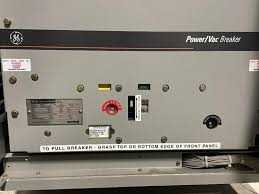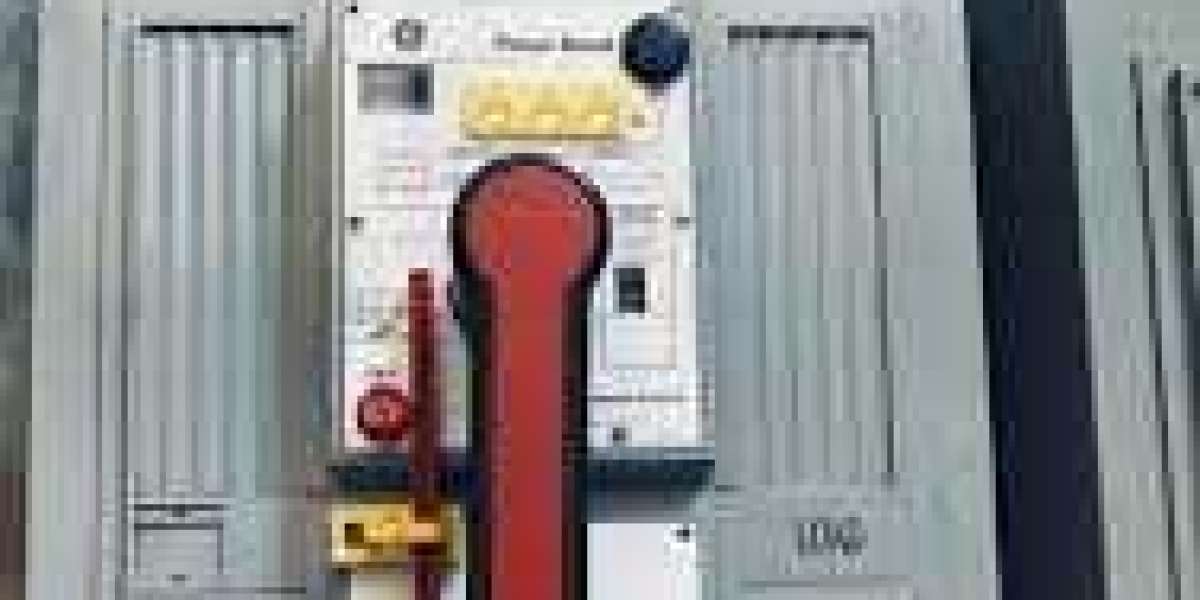
Vacuum circuit breakers (VCBs) make use of a vacuum to break arcs in contrast to air circuit breakers and molded circuit breakers. They are able to last longer life span and provides more security for employees. They are an oil-free device that is stronger in dielectric strength over other breakers. As the contacts break and release a vapor which is composed of positive ions. The density of the vapor is dependent on the current. Circuit breakers for sale on record surplus.
used circuit breakers
Although air circuit breakers and vacuum circuit breakers are both vital elements for transmission lines, they are superior when it comes to dealing with line surges and spikes. Vacuum circuit breakers require lesser maintenance than other types of breakers as well as are more secure to work with due to their lack of no potential for arcing between the contact. They are therefore ideal for systems requiring electricity frequent access.
Vacuum circuit breakers as well as used circuit breakers use a mix of components to provide an arc-free, safe environment. Certain of these gadgets are equipped with a special oil that stops the arc from taking place. Other devices use an ionizing agent that cuts off the connection between the contact. When these components are cut off the electricity will not be allowed to move throughout the system. The arc then is sucked out through a vapor produced when the contact surfaces are separated from one another.
They are employed in mining and industrial companies, power plants, substations and other high-voltage electrical devices. They can be found in central cabinets, double-layer cabinets as well as fixed cabinets.
If you're looking to purchase a used or new vacuum circuit or air circuit breakers, call National Power Equipment today. We have a variety of breakers that will meet your requirements, and will also assist you in selecting the right one for the specific needs of your business. We also offer a complete rental plan to make sure that your facility is always equipped with a backup in case of need to use it in an emergency.
Broken Molded -
MCCBs, also known as molded circuit breakers (MCCB) can be described as a kind of electric device that guards against short circuits and overloads. They house all the components inside an insulated enclosure and may be utilized in residential, industrial and commercial systems. They are also able to be positioned in various positions that include horizontal, vertical and even up/down.
There are a variety of types of MCCBs Each one has distinct tripping characteristics. These differences usually are due to the breaker's trip curve as well as its ability to trip. A type B MCCB can trip when it senses a current that exceeds 3-5 times the rated current. This is crucial to ensure that the breaker is able to protect the system from potentially dangerous overloads.
In general, a molded-case circuit breaker is composed of several parts that include the mold case and terminals, the operating apparatus as well as the trip unit. Operating apparatus is the device that manages and controls the breaker and the trip unit is the device that triggers it. There are various types of trip units available, including electromechanical-magnetic and thermal magnetic. Additionally, certain smart circuit breakers for sale may have electronic trip elements that provide additional functions and flexibility.
The global molded-case circuit breakers market has been expanding rapidly because of rapid urbanization and industrialization within the LAMEA region. In addition, the increase of investment in projects for power generation to improve the power infrastructure is driving the development of this market.
Vacuum Circuit Breakers
Vacuum circuit breakers are characterized by excellent interrupt capability, lengthy operating life, and safety as well as high cost-performance. They are typically used in power systems with medium voltages that can reach 38,000 volts. They also are popular in generator switchgears due to their ability to withstand high levels of interruption as well as their excellent arc quenching capability.
In contrast to oil circuit breakers and SF6 breakers, vacuum circuit breakers do make use of gas to aid in the process of quenching arcs. The arc breaks through the ionization process of metal vapors onto contacts inside the vacuum chamber, which is maintained in a vacuum between 10-7 and 10-5 tons. When the arc has been broken and the dielectric strength of the contacts increases rapidly and the arc goes out of flames.
The benefit for vacuum circuit breakers is that they can interrupt currents from the first contact distance. They do this because they possess an incredibly strong insulation over other types of circuit breakers. In addition, they have the ability to achieve the lowest contact surface temperature, which allows them for use in extreme temperatures.
Vacuum circuit breakers have advantages of needing less maintenance than other kinds breakers. They don't need to refill with gasoline or oil, and they don't require an additional oil tank or handling. They also are eco-friendly and don't emit greenhouse gases. Additionally, their exterior envelope is made of glass, which aids in the inspection of the unit externally after the operation. This helps to make sure that the proper vacuum level is kept. If the glass appears transparent from its initial silvery reflection, this indicates there is a vacuum loss is taking place.
Air Circuit Breakers
Air circuit breakers are an instance of circuit breaker for electrical use which makes use of compressed air to open and close operations. They're a good option to protect electronic components due to overloads or short circuits. They are suitable for commercial, residential and industrial settings. Additionally, they provide a range of advantages, such as low cost of maintenance and excellent reliability ratings for fault currents.
The process of arc interruption in the vacuum circuit breaker is distinct in comparison to other kinds that use circuit breakers. It differs in the materials utilized for the contacts that carry current that determines how the arc interrupter functions. It's best to applications that require low voltages as well as a excellent short circuit break capacity. It is the most popular option for mining and industrial organizations as well as power plants and electrical substations.
There are two types of air circuit breakers: axial blast and cross-blast. Axial blast ACB features a fixed contact as well as a moveable contact. Both is connected via the arcing probe. If a fault occurs an arc breaks through an axial blast of air. This causes it to fall into a chute made of baffles and arc splitters which prevent the arc from returning.
The cross-blast ACB features a fixed contact as well as arcing rings connected to a rotating support. If a problem occurs it is forced through a chute using the airblast. The arc then is removed from the contacts and stretched until it is completely extinguished. Cross-blasting also permits the breaker to function reliably under the most intense fault currents.








